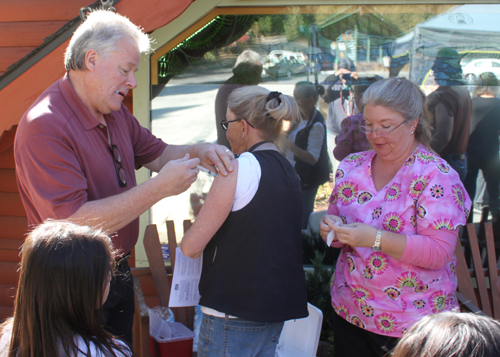
County, state and federal health officials intensified their admonishments to the public to obtain flu vaccines. State officials confirmed seven deaths already this season, as cases of influenza are well ahead of normal.
“For this time of year, seasonal influenza activity continues to rise in California. This week it reached the level of activity considered widespread by the [federal] Center for Disease Control,” said Gil Chávez, deputy director of the Center for Infectious Diseases at the California Department of Public Health, in a phone call with reporters. “All available indicators of influenza-like activity … are on increase.
“Outpatient visits at local hospitals is above what is expected this time of year. More importantly, the number of confirmed fatalities reported to CDPH is rising rapidly.”
Riverside County’s Department of Public Health also announced the first confirmed 2014 flu death. A 30-year-old Coachella Valley man who died after being briefly hospitalized, tested positive for the H1N1 influenza strain, to Dr. Cameron Kaiser, Riverside County health officer. Officials are investigating whether the decedent had other underlying health issues that may have contributed to his death. Officials have not confirmed whether he had received a flu vaccine, which can be effective against the H1N1 strain.
Besides the seven confirmed deaths, CDPH is investigating another 28 deaths that have been attributed to the flu. At least two of the seven people who died from flu were not vaccinated, according to Chávez. The state did not know whether the other had received the vaccine.
Officials at all levels are watching the increase in flu activity and urging the public to get vaccines. “We are fortunate [in California] to have vaccines available,” Chávez stated. “There is plenty of the flu vaccine available.”
This season the predominant flu strain is H1N1, which created a pandemic flu in 2009, when more than 600 Californians succumbed to it. “H1N1 does not discriminate on the basis of age,” Chávez warned.
The CDC reported 61 percent of influenza-associated hospitalizations have people between the ages of 18 and 64. “More commonly, most flu hospitalizations occur in people 65 and older. This pattern of more hospitalizations among younger people was also seen during the 2009 H1N1 pandemic,” according the CDC Summary of Weekly Fluview.
“Some people wrongly believe that it is too far into the flu season,” Kaiser said in a release. “That is not the case. There is still time and the vaccine is readily available.”









